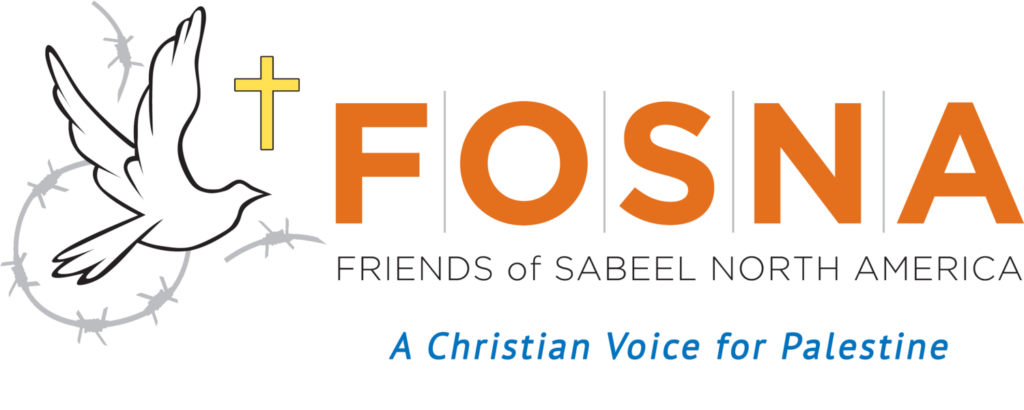
by Rev. Chad Collins
It was my great honor to be part of the Apartheid Free Campaign delegation to Palestine, May 5 – 14. One of our goals was to observe Israeli apartheid in its many forms, particularly in East Jerusalem and within the 1948 borders of the state. This trip was to sharpen our focus and strengthen our voices as we, in partnership with many denominational Palestine Israel Networks (PINs), the American Friends Service Committee (AFSC), and others, prepare for the official launch of the Apartheid-Free Campaign on June 6th.
We met with and learned from many sisters and brothers struggling daily to stay alive and provide life for their families. We met with families from Al Araqib, a village in the Naqab, whose village has been destroyed and rebuilt over 215 times (since 2010). We met with families living in Masafer Yatta whose land is being confiscated, whose homes are under weekly demolition orders, and whose lives are threatened weekly by extremist settlers. We met with Youth Against the Settlements in Al-Khalil (Hebron), which sits right in front of an illegal Israeli settlement and walked the route the youth take through the woods trying to avoid encounters with soldiers and settlers. We heard from many Palestinian and Jewish Israeli activists alike who are working daily to speak truth to both the masses and the powers and who are working to bring Justice to the people and the land!
On our first full day we took a very significant walk down a road leading from the Dung Gate of the Old City through the streets of Silwan to the neighborhood of Batn al Hawa, to the Madaa – Silwan Creative Center. Like many walks in Palestine, it was a difficult trip, physically and emotionally. Walking the steep hill down from the Old City and then up the steep steps into the Batn al Hawa section of Silwan, we faced the dichotomy of one of the worlds super powers oppressively wielding its might in its entirety (by means of 24-hour surveillance, military patrols, setters moving in, and daily threats of home demolitions) upon a people with little to no worldly power, but whose very existence resists and challenges the evils put upon them, challenging the powerful to reckon with their evil and ungodly ways.
As we walked from the Old City to Silwan there were three intertwined images that I hope will resonate with all of you. At the beginning of the walk you witness the presence of the Israeli Apartheid forces at work. This is most notable by their many surveillance cameras, which serve as a reminder that the people of Silwan are always being watched. The people are not free in so very many ways and are being watched by their occupier 24/7.
Secondly, as you make your way down the hill you will begin to see in the distance, painted on the houses of Silwan, murals of the eyes of local and international leaders, activists, freedom fighters and more. These eyes communicate to the people of the world (namely Israel) that Silwan sees them and that they should see Silwan too and know that they are still here and that they love their land and their home. Many of the eyes are from those martyred (murdered) by police (military) forces within Palestine (i.e. Eyad al-Hallaq, Rachel Corrie) and throughout the world (George Floyd). It is powerful to stare into these eyes and to know the stories of their lives and deaths and their witness beyond death. As it is said, the eye is the doorway to the soul and with these murals Silwan is calling us all to see the souls of these beautiful people as they represent the sumud, or steadfast resistance, against Israeli apartheid.
The final image comes from a story from the 9th chapter of John’s Gospel, when Jesus heals the man who was born blind. You remember this story, don’t you? Jesus makes a muddy paste with his spit and the dirt, puts it on the man’s eyes and tells him to go and wash himself in the pool of Siloam. In Arabic, the pool of Silwan. That’s right, a little further down our walk, we came to the Pool of Silwan / Siloam. And it is still in use, for wading and washing.
To me the significance of these 3 images is wrapped up in what we see and what it does to us. Do you see what I see? First we see a worldly power which constantly threatens the lives of the innocent, indigenous. I am sad and discouraged when I see this. Second we see the creativity and beauty of a people, seemingly without any power, calling the eyes of its oppressor to see deep within their souls. I am challenged and inspired when I see this. Thirdly, we see a pool where a man, blind from birth and without any power at all receives his sight. When I see this pool, I am encouraged to believe that what seems impossible on the outside is in fact possible. I see that though Israel holds all the worldly power in its hands, the people of Silwan (the people of Palestine) know and live their lives with a power that can never be snuffed out! And thus we see that hope is alive!
I admit it is not easy to see with eyes of hope when injustice seems to prevail. And it is not easy to live under an apartheid government. So, when discouragement comes, let us look to Silwan and may our eyes be touched by Jesus, washed in the pool and guided by the people of Silwan whose eyes and lives are calling to the souls of the whole world to stand with them. And may we fight for their freedom!



